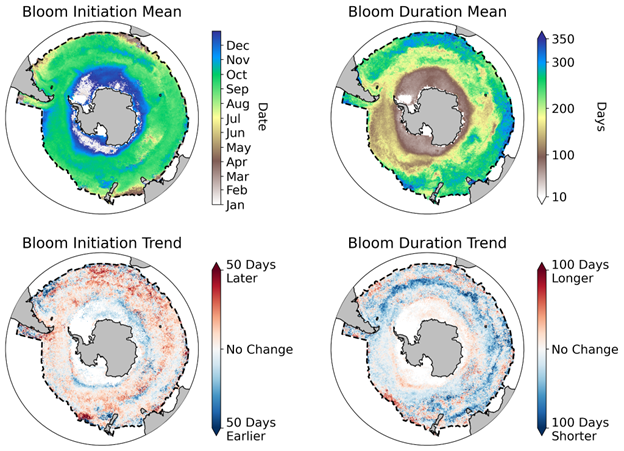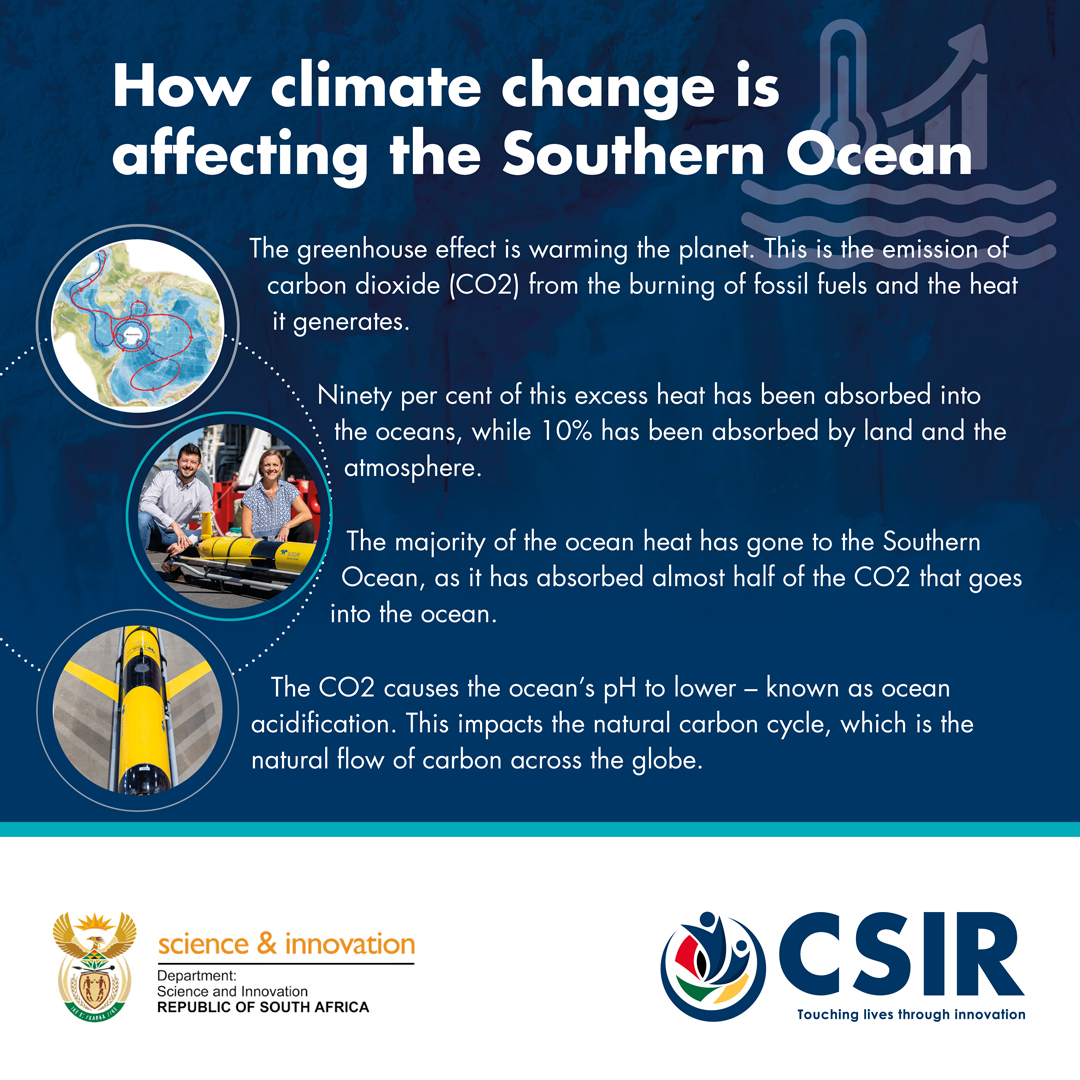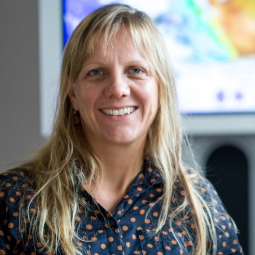Climate change is altering the seasonal timing
The Southern Ocean, which surrounds Antarctica, plays a disproportionate role in buffering the impacts of climate change by taking up 50% of the global oceanic uptake of carbon, and 75% of the excess heat generated by anthropogenic carbon that remains in the atmosphere.
Climate change is altering the seasonal timing and abundance of essential microscopic marine plants in the Southern Ocean – CSIR study
Microscopic marine plants (phytoplankton) in the Southern Ocean are expressing widespread adjustments, shifting in the timing of their abundance by up to 50 days per decade over the past 25 years, suggests a study by the Council for Scientific and Industrial Research (CSIR), published in the scientific journal Nature Climate Change. These shifts will likely have repercussions for the synchronisation of Antarctic marine food webs and global carbon uptake.
The study, which was funded by the Department of Science and Innovation, was led by CSIR chief scientist Dr Sandy Thomalla, CSIR senior researcher Dr Sarah-Anne Nicholson, CSIR senior researcher Dr Thomas J. Ryan-Keogh, all from the Southern Ocean Carbon–Climate Observatory (SOCCO), as well as CSIR senior researcher Dr Marié E. Smith, based at the CSIR in Cape Town, South Africa.
The Southern Ocean, which surrounds Antarctica, plays a disproportionate role in buffering the impacts of climate change by taking up 50% of the global oceanic uptake of carbon, and 75% of the excess heat generated by anthropogenic carbon that remains in the atmosphere. Ocean carbon uptake is driven, in part, by phytoplankton that remove carbon when they die and sink to the ocean’s interior. Phytoplankton also act as the base of the marine food web.

(Photo: Wim van Egmond)
While climate change is expected to alter the abundance and timing of phytoplankton blooms, there has been little consensus in projections regarding the direction and the magnitude of this change. It is nonetheless clear that significant shifts in the foundational part of the marine food web in this key environment can disrupt the flow of energy to higher levels, like birds and mammals, endangering ecosystems and influencing global climate by changing natural carbon dioxide uptake.

versus a relationship where the prey peaks earlier
and is no longer synchronised with the lifecycle of its predator.
The team of researchers analysed 25 years (1998 – 2022) of satellite ocean colour chlorophyll-a data, a proxy for phytoplankton biomass, taken at high spatial (around 1 km) and temporal resolution (approximately daily). Their results suggest an overall trend towards phytoplankton blooms that initiate later, terminate earlier and subsequently have shorter durations, with changes also evident in the characteristics of seasonality and a typical increase in amplitude. These shorter blooms are expected to reduce the amount of carbon being exported and stored in the Southern Ocean. An exception is in the sea-ice impacted regions of the Southern Ocean, where blooms initiate much earlier and have longer durations that are a likely response to the reduction in sea ice concentration and extent.
“Adjustments in the characteristics of variability of the seasonal blooms can also affect the type of phytoplankton that grow there, which can impact the efficiency of carbon drawdown and the transfer of carbon through the food chain,” says co-author Dr Marié E. Smith.
These changes are significant and larger than previous earth system models had suggested, with measured bloom initiations shifting by up to 50 days per decade, compared with predicted model shifts of up to 10 days per decade. In addition, some measured trends are in the opposite direction to those predicted in the models.

of bloom initiation and duration with their respective
“These findings highlight that the observed changes are probably more dramatic than models predict, and points towards gaps in our understanding and ability to accurately represent a major planetary carbon flux,” says co-author, Dr Sarah-Anne Nicholson.
Lead author and SOCCO research group leader, Dr Sandy Thomalla, went on to say that “Adjustments of this magnitude in the timing of phytoplankton blooms can impact the nutritional stress, reproductive success and survival rates of larger marine species, including seals, seabirds and humpback whales, especially if they are unable to synchronise their feeding and breeding patterns with their food supplies.”
The team of researchers highlight that there is a chronic lack of observations for the Southern Ocean, which challenges the ability to understand how it will respond to a changing climate, while global climate models are struggling to reproduce observed changes in the Southern Ocean.
“We need more directed funding to support long-term observations in the Southern Ocean. This effort is necessary for improving our understanding of how this unique and globally important ecosystem works so that we can improve our Earth system models for increased accuracy of climate projections and their application towards robust mitigation plans,” says co-author, Dr Thomas Ryan-Keogh.
Thomalla concluded that “These trends are anticipated to continue and possibly even accelerate as climate change further alters conditions in the Southern Ocean; it demands public attention in the context of the ecological impacts that these changes can elicit.”


-ENDS-
Issued by CSIR Strategic Communication
For more information, contact:
David Mandaha, CSIR Media Relations Manager
Tel: 012 841 3654
Mobile: 072 126 8910
Email: dmandaha@csir.co.za
About the CSIR:
The CSIR, an entity of the Ministry of Higher Education, Science and Innovation, is one of the leading scientific and technology research, development and implementation organisations in Africa. Constituted by an Act of Parliament in 1945 as a science council, the CSIR undertakes directed and multidisciplinary research and technological innovation, as well as industrial and scientific development to improve the quality of life of all South Africans. For more information, visit www.csir.co.za.
Follow us on social media:
Twitter: @CSIR. Facebook: CSIRSouthAfrica. Instagram: CSIRSouthAfrica. LinkedIn: Council for Scientific and Industrial Research (CSIR). YouTube: CSIRNewMedia


